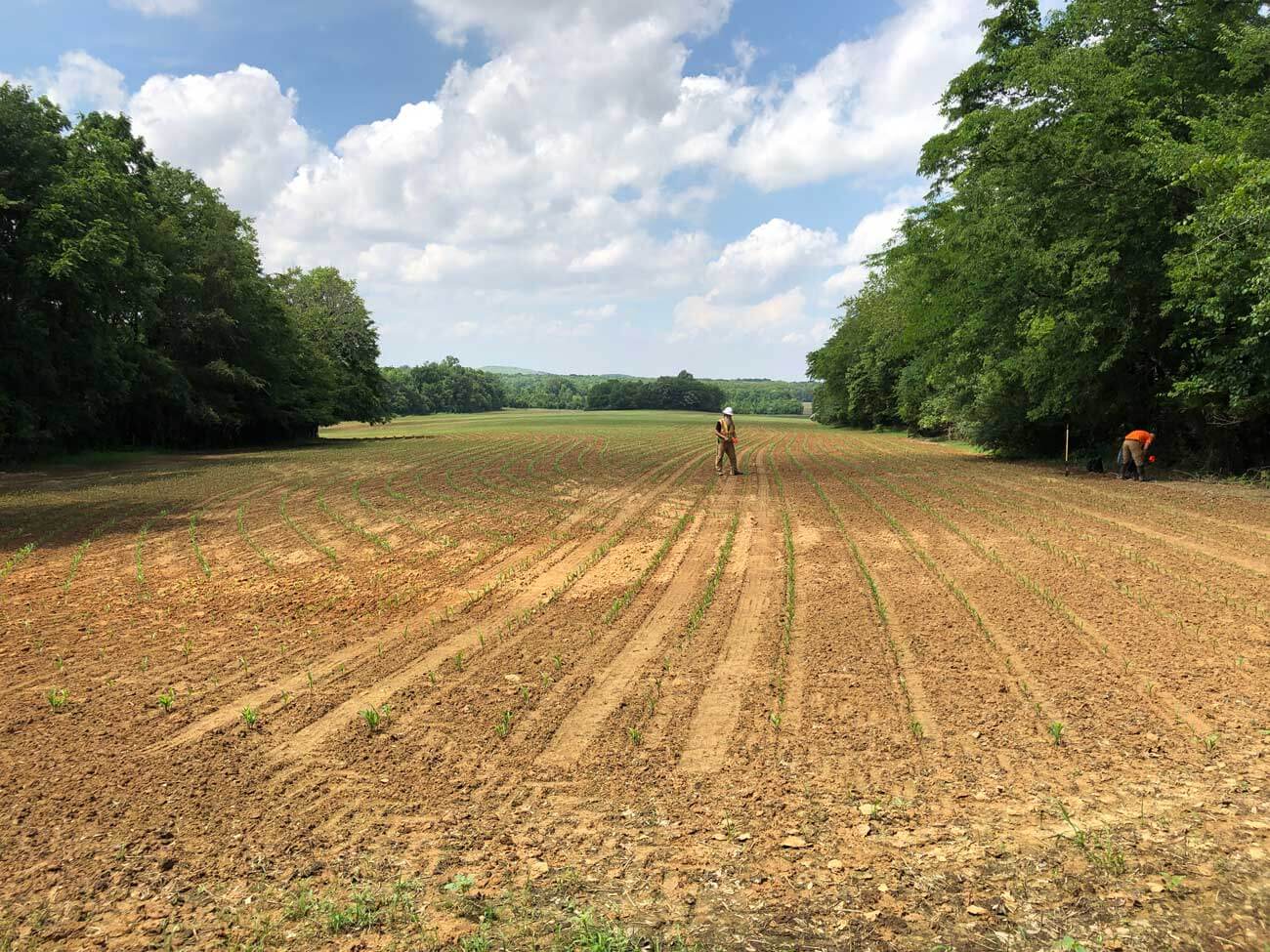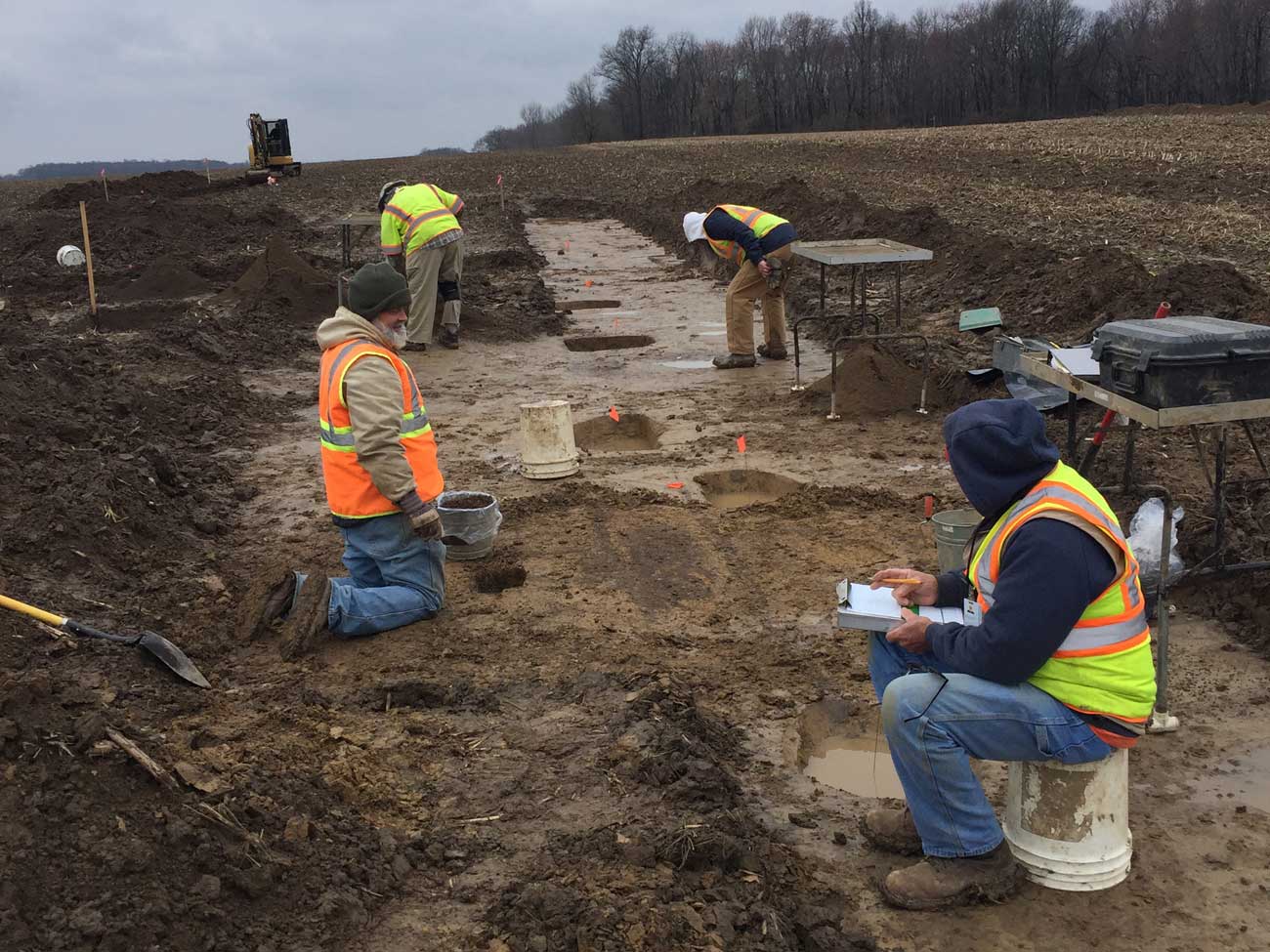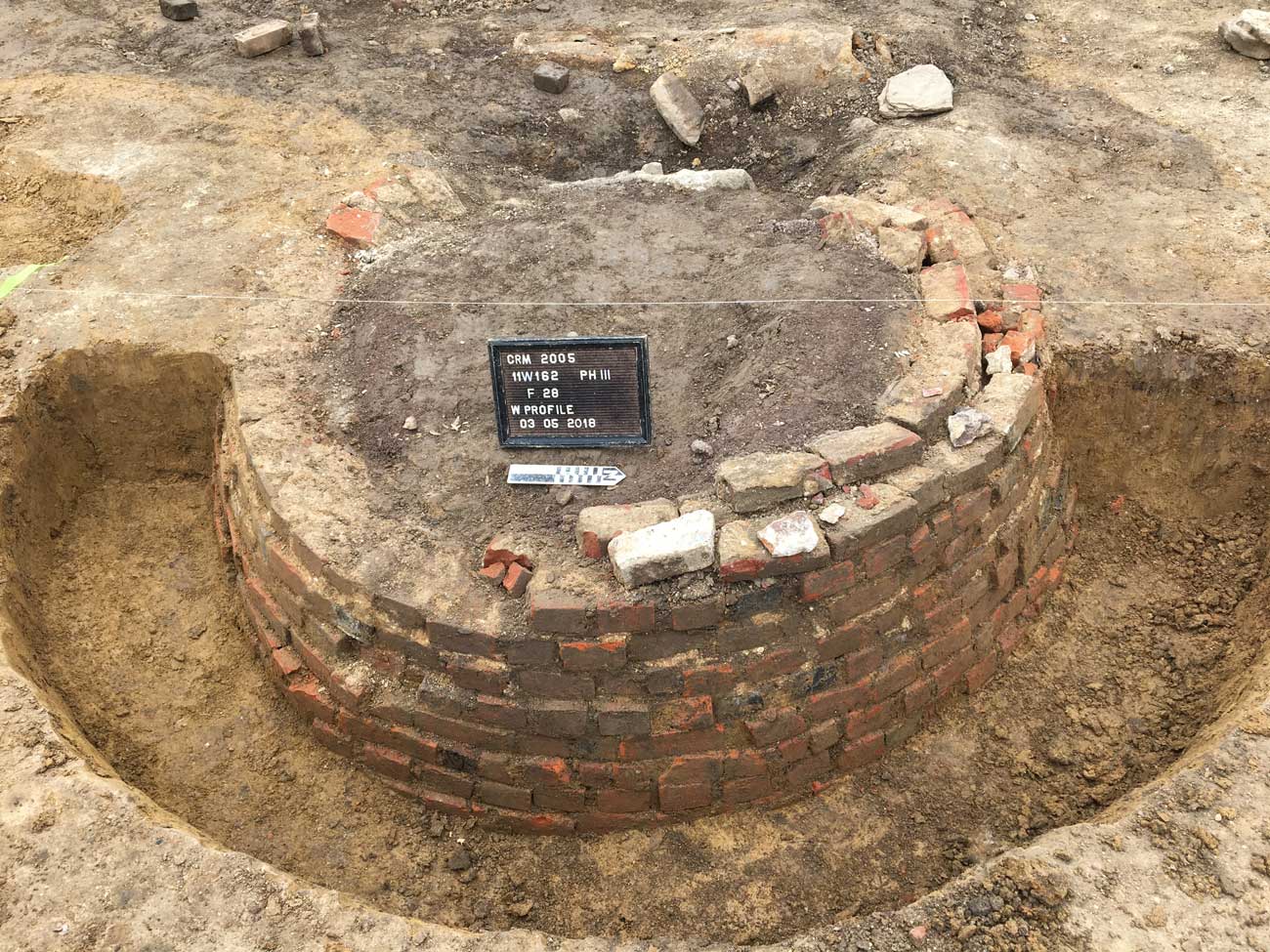Phase I survey consists of systematically inspecting a project area to identify all the cultural resources (sites) that are present. This level of effort includes a preliminary evaluation of the significance of the identified sites using criteria set by the National Register of Historic Places (NRHP).
Phase I Survey

Phase II Testing
Occasionally, a site identified during a Phase I survey is evaluated as potentially eligible for listing to the NRHP. The preferred treatment of a potentially eligible site is avoidance; however, when avoidance is not feasible, Phase II site testing is recommended. During Phase II testing, additional archival investigations and field excavations are conducted to complete a formal evaluation of site eligibility for listing to the NRHP.

Phase III Mitigation/Data Recovery

On rare occasions, a site is determined to be eligible for listing to the NRHP and cannot be avoided by activities associated with the proposed undertaking (e.g., mining or construction). In such cases, Phase III mitigation is required to recover data from the significant site that will be impacted by project activities. Phase III mitigation includes the preparation of a state-approved research design, large-scale hand and mechanical excavations, comprehensive artifact, botanical, and faunal analyses, and the preparation of an archaeological report of findings.
